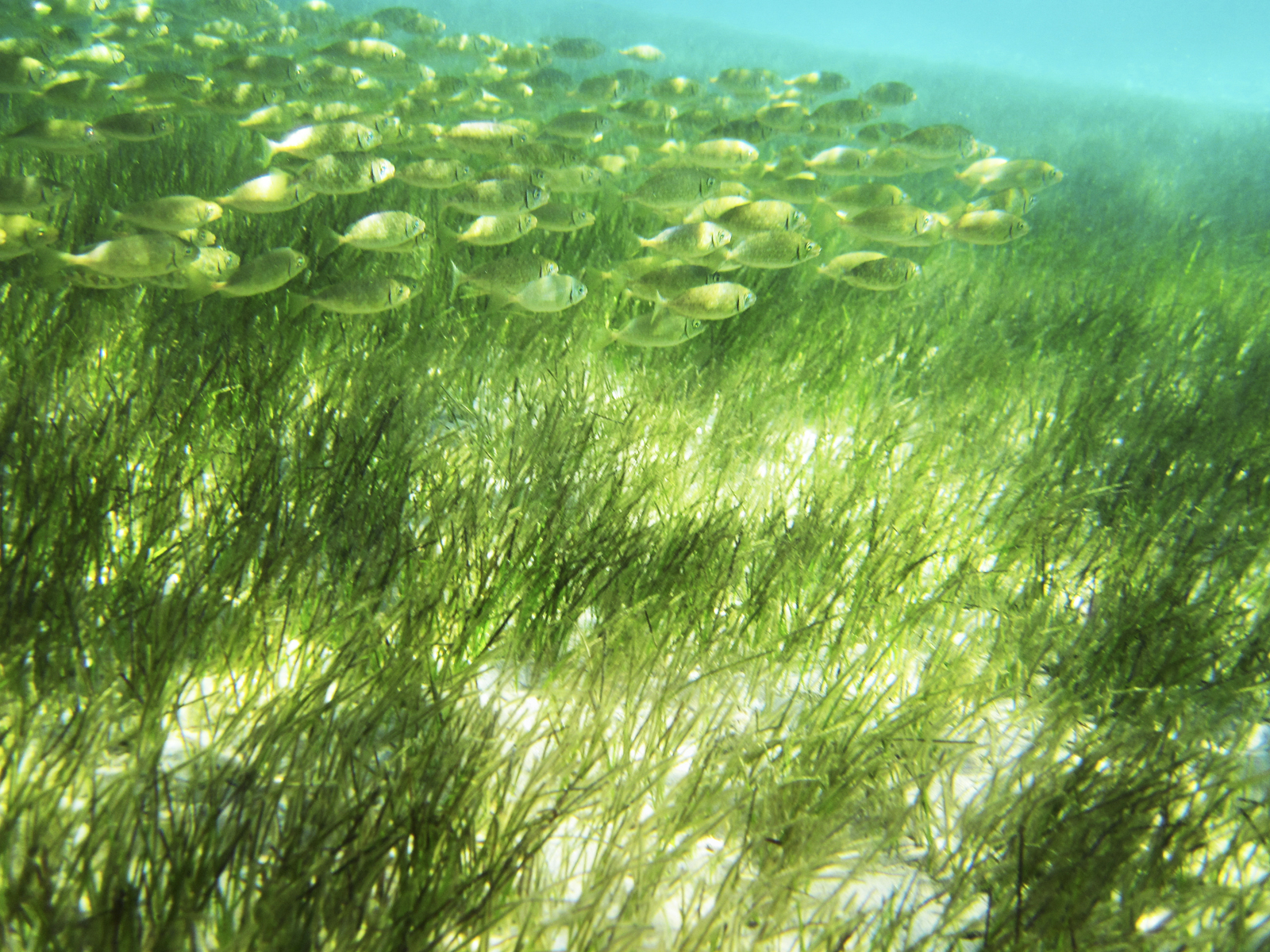Sea grass , often spelled seagrass, is a flowering plant in the ocean that resembles grass on land. Sea grass even forms large underwater meadows. However, sea grass is not a type of true grass. Sea grass grows in waters around all the continents except Antarctica. There are many different species (kinds).

Sea grass grows leaves, rhizomes (underground stems), roots, and flowers. The leaves of most species are ribbonlike, though some are oval or cylindrical. They range from less than 1 inch (2.5 centimeters) to about 10 feet (3 meters) long, depending on the species. Sea grass lives in shallow waters, usually no deeper than about 300 feet (90 meters). It grows in shallow waters because the leaves need sunlight to make food. The roots of sea grass anchor it in sediment (sand or mud) and take up nutrients. Sea grass leaves also can take up nutrients, unlike the leaves of plants on land. The flowers are small and pale, because they do not need to attract insects or other pollinators. Instead, sea grass releases pollen onto the ocean currents.
Many living things depend on sea grass. A great variety of animals use sea grass to hide from predators (hunting animals). For the same reason, many animals use sea grass beds as nurseries for their young. Other living things colonize the leaves. Such animals as manatees and sea turtles eat the leaves. In addition, dead and decaying sea grass material is an important source of food for such animals as crabs, snails, and worms. Sea grass also helps to improve the quality of ocean water. It slows currents, stabilizes sediment, and removes excess nutrients from the water. Unfortunately, many sea grass meadows are highly threatened by human activities.
Sea grasses are not closely related to seaweeds or other algae. Instead, they descended from plants that had lived on land, along the coasts, for hundreds of millions of years. Scientists think different groups of sea grasses colonized the ocean independently, at different times. Sea grasses are the only descendants of land plants that can live fully submerged in the ocean.
